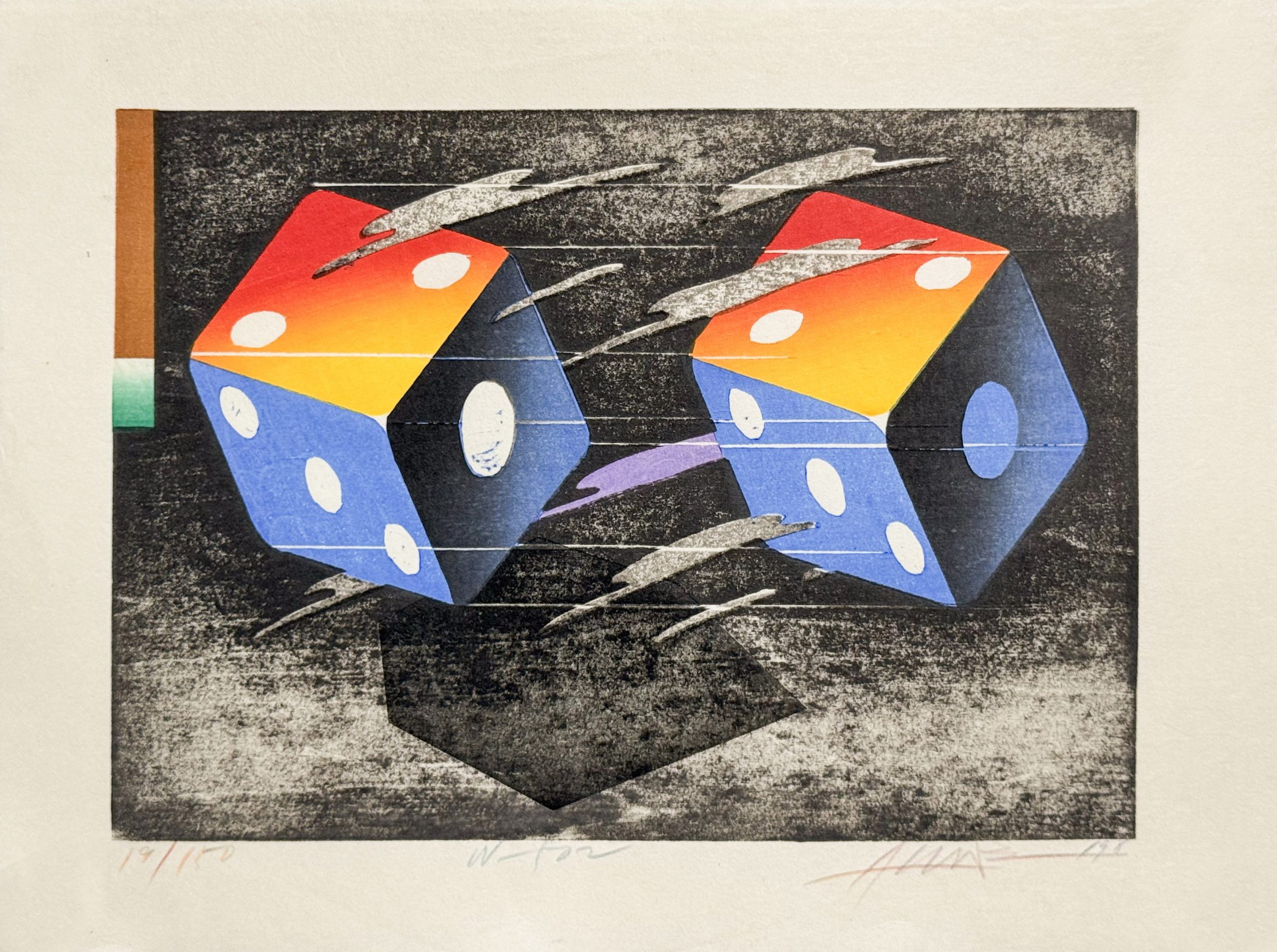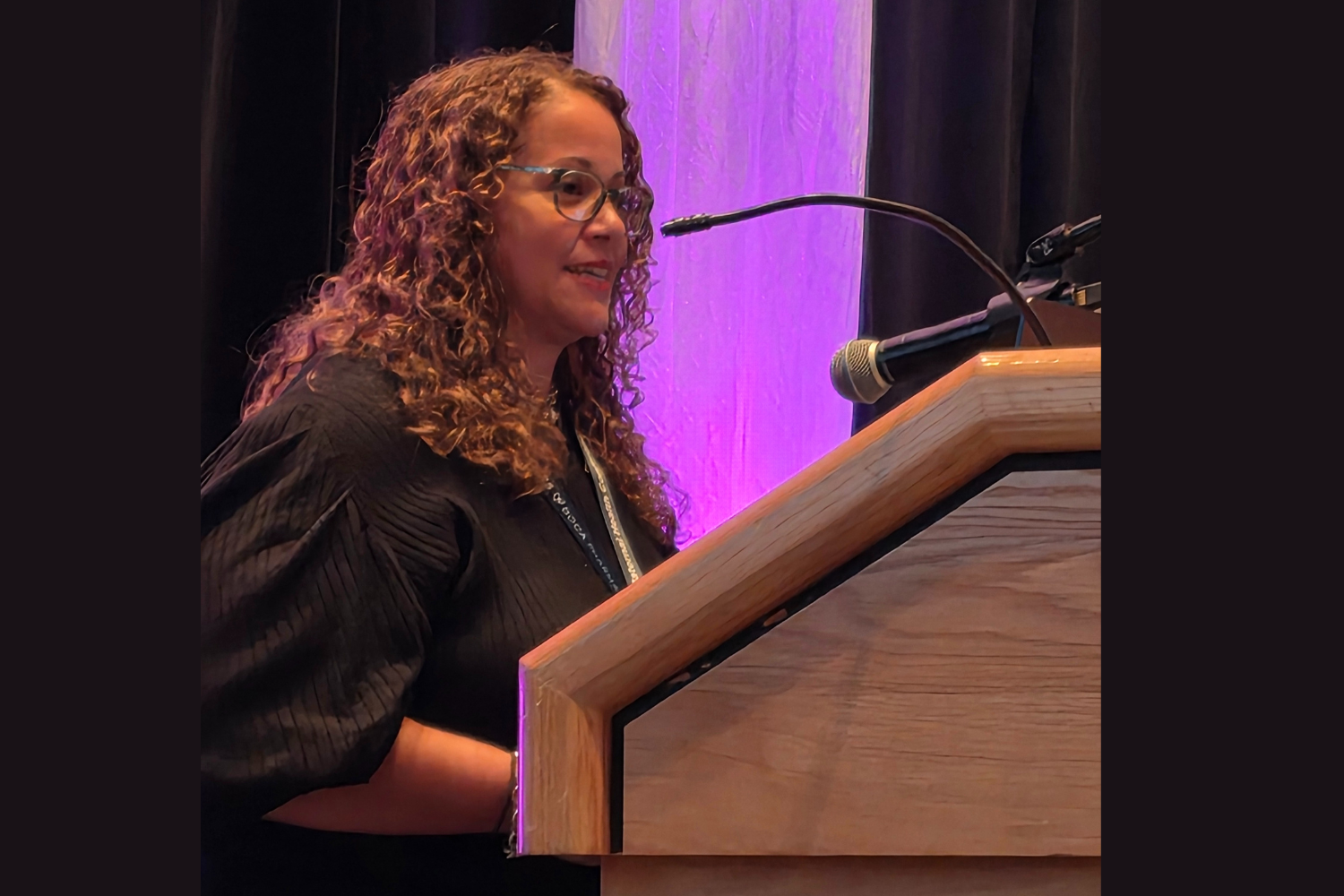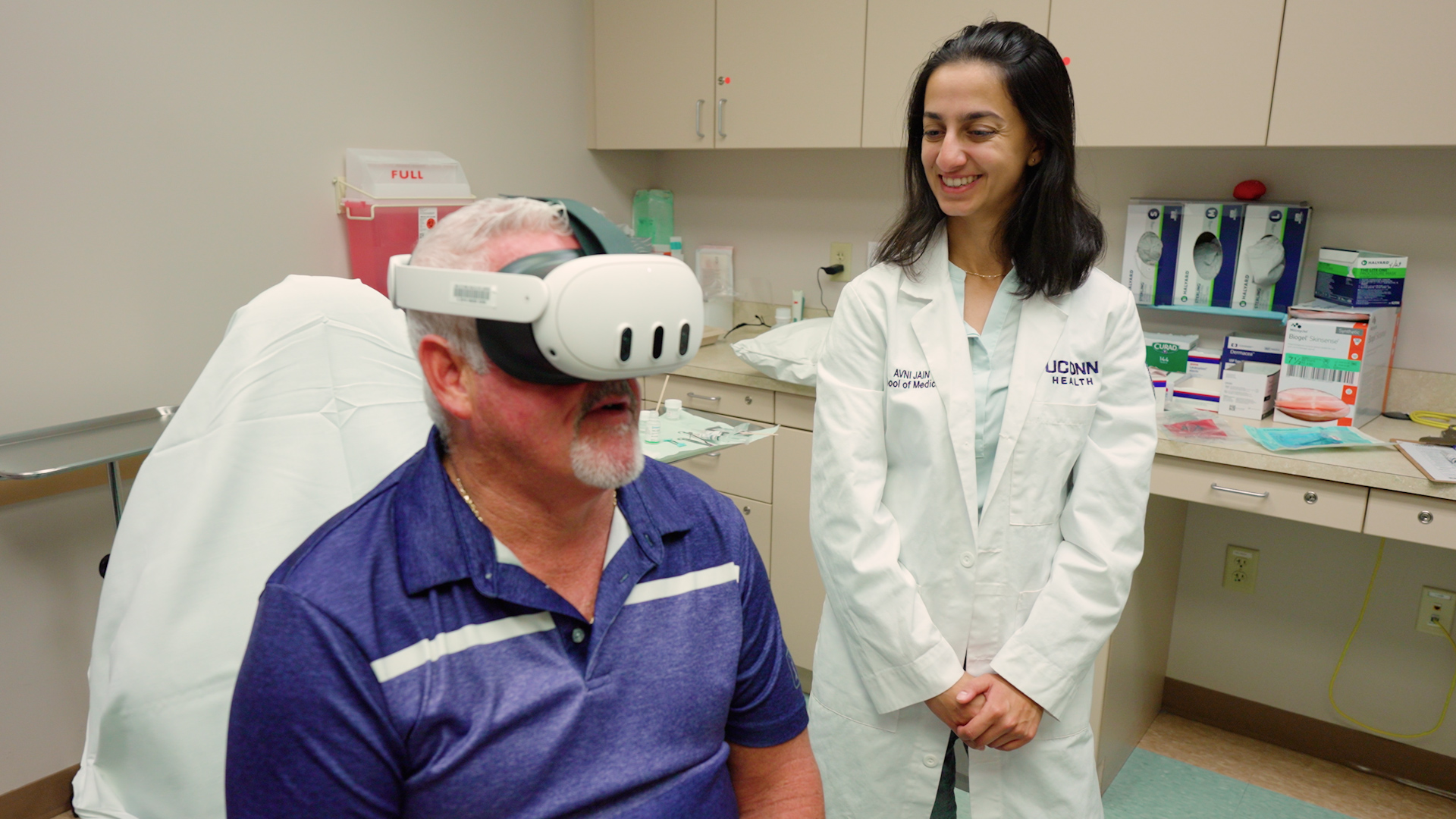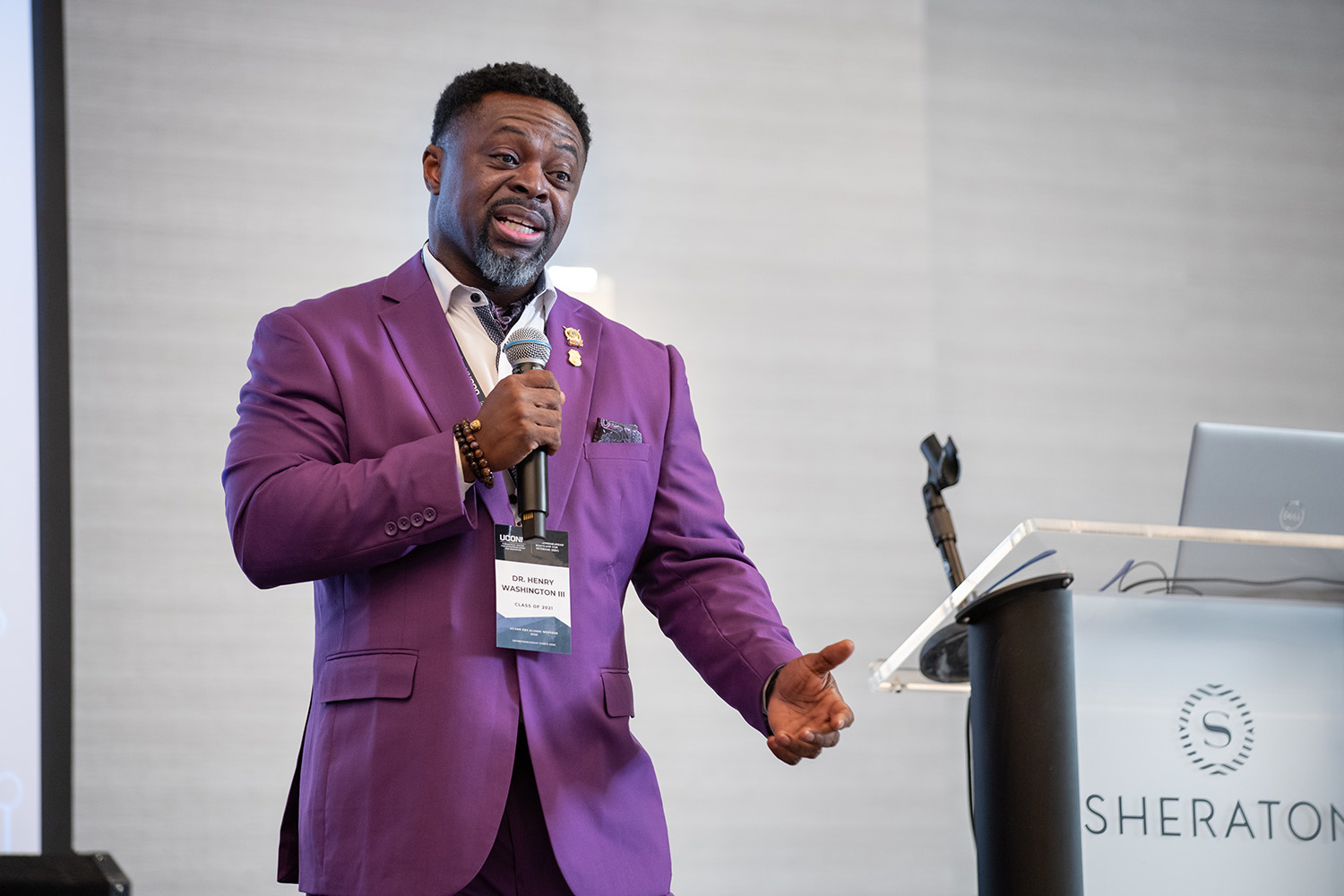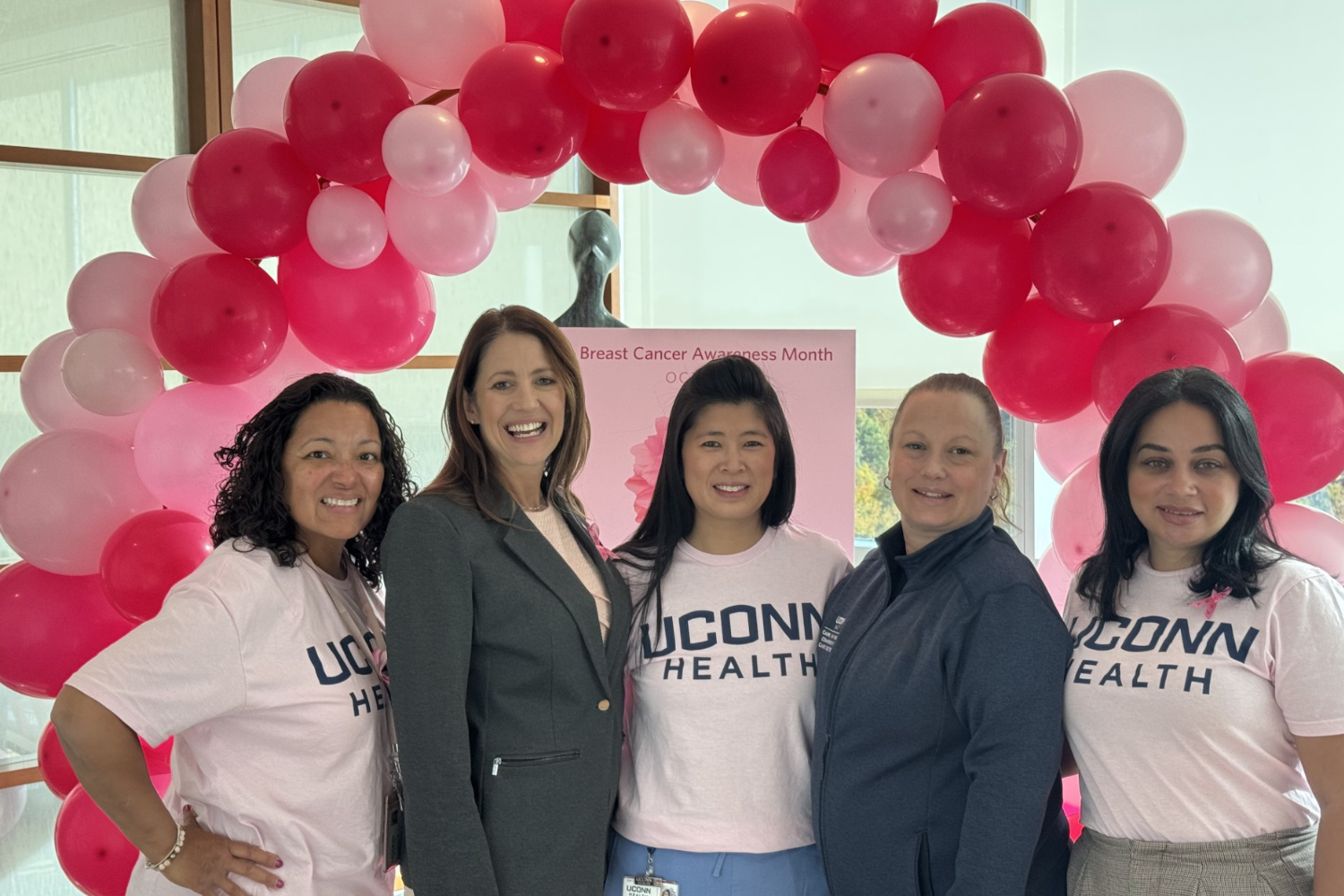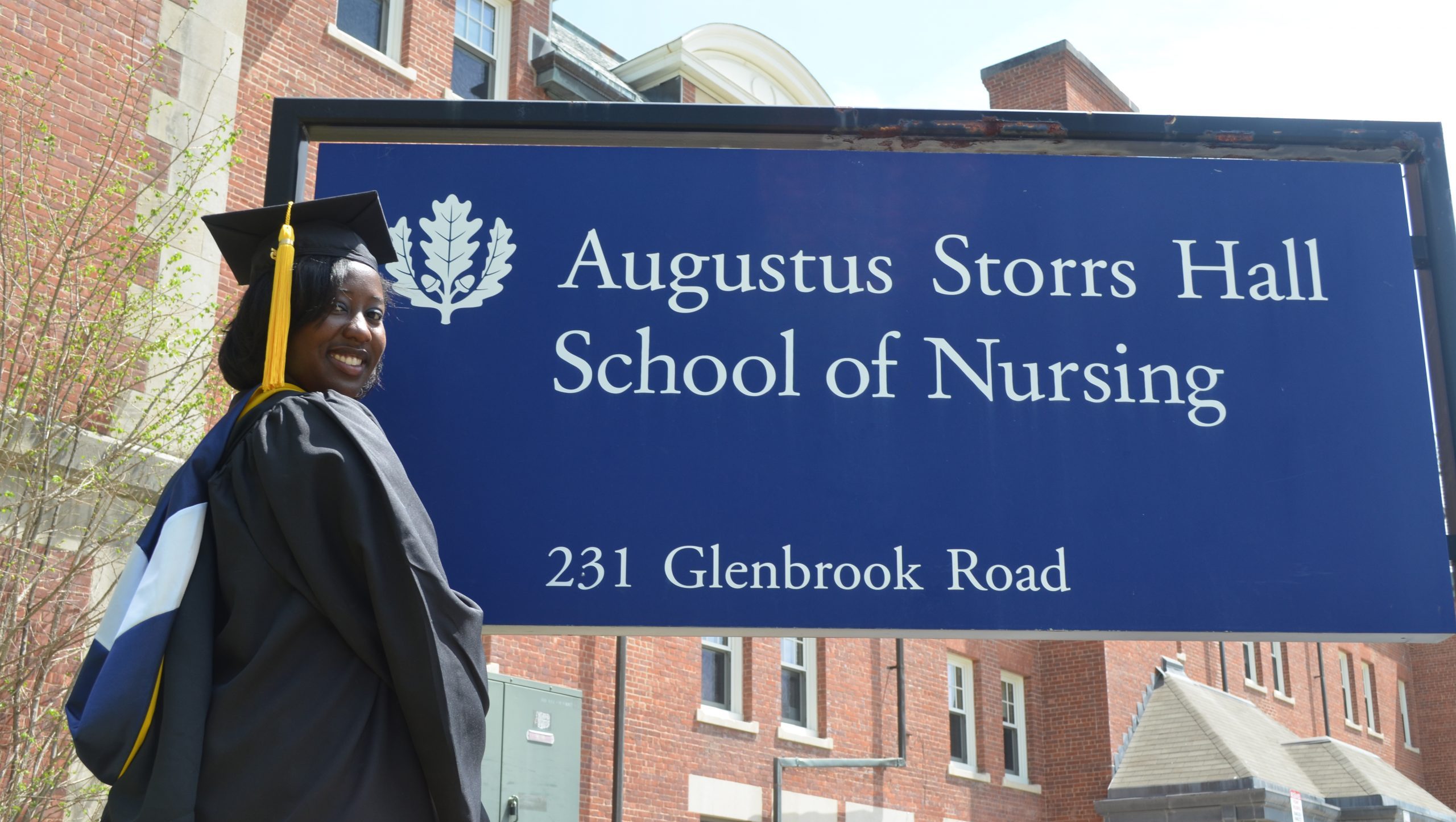Working in Multiples: Counterproof Press Exhibition Displays Art Made At and For UConn
If one of the reasons an artist prints multiple copies of the same piece is to disseminate it to the masses, so is the idea behind a new exhibition celebrating UConn’s little-known Counterproof Press.
Surely, getting the maximum number of eyes on a work of art in a gallery space isn’t the same as screen printing or letterpress. But the effect of bringing into daylight artwork that otherwise would have limited viewing bears similarity.
And an exhibition that puts on display printed art that already was created in multiples at least doubles the effect.
“Printmaking is about making affordable, accessible artwork for people,” says Enrique Figueredo, an assistant professor in the Department of Art and Art History. “Back in the day, unless you were nobility you didn’t have access to art. Unless you were well off, you couldn’t buy art. Printmaking changed all that. Because an artist could make multiple prints and sell them for a lot less, the middle class could buy art and put it on their walls.”
On the walls of the Contemporary Art Galleries in the Art Building, Figueredo has selected 30 pieces from the archives of Counterproof Press for the exhibition, “A Decade of Counterproof Press,” on display through Oct. 25.
It’s part of a resurrected effort to get Counterproof back in order after a hiatus that started during the pandemic. Over the last year, Figueredo and graduate assistant Sonja Langford have cataloged Counterproof’s collection, digitally recording the history of each piece and the number of copies in UConn’s possession, while connecting with professors and others who may have been involved in its creation.
While Figueredo joined UConn only three years ago, Counterproof was established in 2014 as a collaboration between numerous departments to create editions of prints with visiting artists, although some works in the collection date to the 1980s before Counterproof was formalized.
When visiting artists came to work with students or give a talk, they also created an original piece for Counterproof to print – almost like a souvenir of their time here. From those prints, the artist kept some, UConn kept some, and some were sold to raise money to do it all again.
“These artists may or may not be printmakers. They could be painters, they could be sculptors, they could be poets. But together we worked to come up with something to do and print,” Figueredo says.
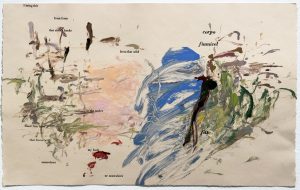
All About the Message and the Multiple
Printmaking, he goes on to say, is the transfer of information onto a piece of paper or other item over and over again. That transfer might happen from a piece of metal, wood, or screen that’s inked up and pressed onto another surface to make words and images, even abstract markings. Think, newspapers, flyers, and books.
The practice started as a way to disseminate written information to the masses, he continues, adding that people eventually started putting illustrations alongside the written word and soon realized those illustrations didn’t need to have words alongside. Thus came the idea of printmaking for art’s sake.
“I teach the students the history of making images from plates in a very analog way to get them to draw and think about what it means to print something on paper in a multiple,” he says. “It’s all about the multiple, so they need to consider why they’re doing it and what’s their message.”
In the Bishop Center at UConn Storrs, Figueredo and associate professor John O’Donnell teach students to use the old-school metallic press with giant wheels to create prints the way it was done 500 years ago.
Little modern-day technology is used in class, he says, comparing the process used here to an early version of the printing presses actor Leonardo DiCaprio employed to make counterfeit money in the movie “Catch Me If You Can.”
“We don’t use any technology really,” Figueredo says. “We carve and draw with our hands and on metal and wood and use old-school things like acids and solvents to get those images on the surfaces. Then we run it through a mechanical hand-driven press with giant wheels, a heavy bulky machine.”
But it’s something that students master. They even learn how to print T-shirts and tote bags, he notes, driving home the idea that art exists all around, not just in museums and galleries.
‘This Show Documents the History of UConn’
Counterproof Press has about 50 individual prints from visiting artists, and oftentimes as many as 20 to 50 copies of each print. Figueredo maintains them all in a flat file in the Bishop Center, and says he feels like an anthropologist when trying to unearth the history of the oldest in the bunch.
All anyone can remember from artist Akira Kurosaki’s visit to UConn was that it came in 1982 and resulted in two woodblock prints for Counterproof, “Starlight” and “Unknown,” which depicts a pair of multicolored dice.
Both are in the latest exhibition, opposite the wall that displays the full run of Wallace Stevens Poetry Program broadsides, printed to commemorate the English department’s annual event that brings a poet to campus in the spring. In each of the last six years, students artistically created and printed copies of a poem gifted by the poet.
Another collaboration on display, this one led by O’Donnell, is a set of pink and white screenprints from a Women’s, Gender, and Sexuality Studies class last academic year during which 80 students used text, historical excerpts, and images to talk about modern-day feminism.
But Figueredo starts the show with the colorful photopolymer letterpress, “Interactions II,” from Suzy Gonzalez and Michael Menchaca, who visited UConn in 2017 and developed a layered piece that’s playful and eye-catching.
“I wasn’t there to print this, but it must have been so fun,” he says. “Look at the drawings. They’re just completely original, spontaneous, and that’s the kind of message I want when you walk in here. That’s what art making should be.”
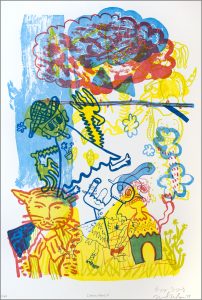
The untitled monotype and letterpress from Danielle Pieratti, a visiting assistant professor of English, and Anna Schwartz ’25 MFA is the newest addition to Counterproof’s collection, printed only days before the show’s installation in mid-September.
Figueredo says Schwartz painted directly on a plexiglass plate to create a variable edition of paintings on paper while Pieratti used handset metal type to place words of poetry around the paintings using the letterpress. The plate then went through the press, Schwartz took it back, painted fresh on it again, and handed each variant to Pieratti who was ready on the letterpress.
It’s a technique that’s not often used, Figueredo says, but one that produces an original each time even if the second and third copies attempt to mirror the first.
“As I was going through the archive, I was so impressed by all the work that colleagues have made,” he says. “This show documents the history of UConn, the history of the art department, all these incredible professors and visiting artists and minds who have been through these halls and collaborating to create this work.”
Artist Jani Ruscicia visited UConn in 2017 and created “P for Platinum” and “A for Alabaster” using a CNC machine in the woodshop to carve out images on a piece of MDF that then was inked and pressed onto rice paper.
“They’re just very unique,” Figueredo says of the works, noting the two in the show are UConn’s only copies.
Photographer Odette England’s visit to UConn in 2024 resulted in prints of her picture, “The Pledge,” a piece that Figueredo says he wanted to include to remind visitors that photography also is a form of printmaking.
“You could argue that a projection from a projector to a wall is a form of printmaking, or even a movie. With new media, the definition of printmaking is quite broad,” he says. “Even your cellphone is kind of printmaking. If you think about the app icons, those glyphs on your screen are kind of a print.”
And that means everything from the button a person presses to open their email to the Gutenberg Bible are examples of printmaking.
“Sometimes printmaking gets the stigma that it’s very serious, and printmakers are very serious because everything must be perfect. That’s not necessarily true. Working with Counterproof is fun and exciting and contemporary. It’s a space where anything can happen,” Figueredo says.
Latest UConn Today
- Dr. Linda Sprague Martinez of UConn Health Disparities Institute Served as Keynote Speaker at Hispanic Health Council’s Annual Maternal Health ConferenceDuring Hispanic Heritage Month Connecticut’s Experts in Maternal Health and Violence Prevention Gathered in Hartford.
- Comfort in 3D: Study Finds Virtual Reality Eases Patient AnxietyEven a simple skin procedure can make someone a little nervous. At UConn Health, a new study is helping patients find calm in an unexpected way – through virtual reality. Led by fourth-year medical student Avni Jain in partnership with dermatology chief resident Dr. Albert Zhou – the study gives patients the chance to slip […]
- A New AI-Based Method to Help Prevent Biological InvasionsAs the world becomes more interconnected, some plants have benefitted from a greater ease in movement from one region to another, while some have become problematic. Some introduced species gain a competitive edge, spreading rapidly, outcompeting native vegetation, and transforming entire ecosystems. These species are known as “invasive,” and they can disrupt food webs, alter […]
- Retired Army Major Wins EBV Alumni Event Pitch CompetitionWashington said his work is not only empowering young people but that it gives his own life greater clarity. “People who don’t know their purpose in life are not clear about what they want, and therefore waste their time on mediocre things,’’ he said.
- UConn Health Cancer Center Team Celebrates National Mammography DayUConn Health marked National Mammography Day by celebrating the vital role of its breast cancer care team and raising awareness about the importance of early detection.
- Husky For LifeMeet Vanessa Bolling, DNP, APRN, FNP-BC, a triple husky and faculty member at the Elisabeth DeLuca School of Nursing



